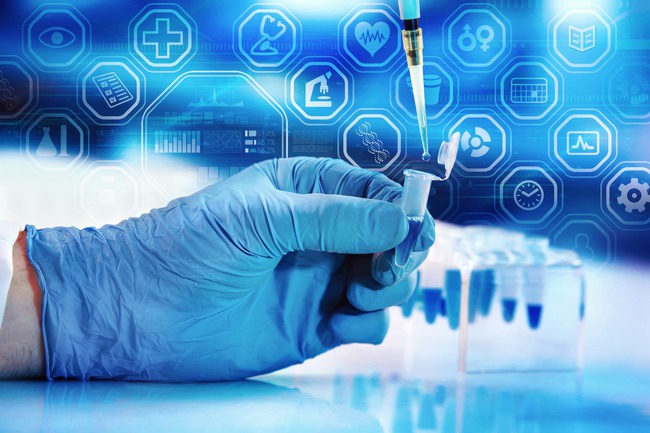The Cell Culture Market is projected to reach USD 57.9 billion by 2029 from an estimated USD 30.9 billion in 2024, at a CAGR of 13.4% during the forecast period of 2024 to 2029. Growth of the cell culture market can be attributed to factors such as the increasing focus and adoption of single use technologies like single use bioreactors, which offer advantages over methods. There is also a rising demand for therapeutics such as monoclonal antibodies, biosimilars and vaccines due to the increasing prevalence of diseases alongside the expanding biotechnology sector. However the high costs associated with cell biology research might impede market growth as it involves research and development into therapies like stem cell and gene therapies. It is crucial that the equipment, reagents and other products used in cell biology research maintain high quality to ensure accurate results.

Browse in-depth TOC on “Cell Culture Market”
997 – Tables
54 – Figures
737 – Pages
Key Market Players:
Key players in the cell culture market include Thermo Fisher Scientific Inc. (US), Danaher Corporation (US), Sartorius AG (Germany), Merck KGaA (Germany), Corning Incorporated (US), FUJIFILM Holdings Corporation (Japan), BD (US) Eppendorf SE (Germany), Lonza (Switzerland), Getinge AB (Sweden), Agilent Technologies, Inc. (US), HiMedia Laboratories (India), Miltenyi Biotec (Germany), STEMCELL Technologies (Canada), Solida Biotech GmbH (Germany), Caisson Labs (US), PromoCell GmbH (Germany), InvivoGen (France), PAN-Biotech (Germany), Cellexus (Scotland), Meissner Filtration Products Inc. (US), Adolf Kühner AG (Switzerland), Bio-Techne (US), Advancion Corporation (US), and BioSpherix, Ltd. (US).
DRIVER: Increasing fundings for cell-based research
Cell culture is integral in developing biological products to combat diseases like cancer and cardiovascular ailments. Globally, significant R&D efforts, backed by both governmental and private entities, are focused on pioneering cell therapy solutions. For instance, CellVovant, a biotech firm affiliated with the University of Bristol, secured USD 9.55 million (GBP 7.6 million) seed funding in January 2021 to accelerate the development of innovative stem cell therapies. Moreover, collaborations between public and private sectors are driving advancements; examples include research funding from organizations like the Ovarian Cancer Research Alliance and the European Research Council for investigating stem cell-based treatments for various diseases. With increasing research and funding directed towards addressing autoimmune, neurological, and cardiovascular disorders, the cell therapy market is poised for significant expansion.
RESTRAINT: High cost of cell biology research
Cell biology research, encompassing cutting-edge therapies like stem cell and gene therapies, demands top-tier equipment and reagents to ensure precise outcomes. As the need for stringent quality control and regulatory compliance rises, the cost of conducting cell biology research has significantly surged. The expensive nature of this research, coupled with budget constraints faced by researchers and small-scale pharmaceutical companies, poses hurdles in adopting microcarrier-based technologies for large-scale cell culture. These financial barriers impede the growth of the market, deterring potential adopters and customers.
OPPORTUNITY: Growth opportunities in emerging economies
Emerging countries such as India, China, and Brazil offer promising opportunities for market players, propelled by flourishing biopharmaceutical sectors, lower regulatory requirements, diverse healthcare markets, and government support. In the Asia Pacific, developing nations have become focal points for organizations seeking cost-effective manufacturing options, particularly in pharmaceuticals. Increasingly, pharmaceutical companies are outsourcing drug research activities to meet rising demands, particularly for vaccines and antibiotics, fuelling the expansion of cell culture in these emerging economies. With substantial investments in biotech, the Asia Pacific region is poised for significant growth, driven by factors like rising demand for new therapies, precision medicine, and advancements in technology such as artificial intelligence and big data analytics.
The consumables segment accounted for the largest share of the product segment in the cell culture market in 2023.
Based on products, the cell culture market is segmented into consumables and equipment. Consumables are further segmented into sera, media, reagents; vessels; and accessories. Equipment is further categorized as bioreactors, storage equipment, and other equipment. Consumables segment dominated the market in 2023 and is expected to grow at a higher rate during the forecast. The largest share of the segment is attributed to repetitive purchase of media & reagents, and growing R&D activities to develop and manufacture advanced therapies.
The pharmaceutical and biotechnology companies’ segment is estimated to register the highest growth rate during the forecast period in the cell culture market.
Based on end user, the cell culture market is segmented into pharmaceutical & biotechnology companies, hospitals & diagnostic laboratories, research & academic institutes, and other end users. The pharmaceutical & biotechnology companies’ segment is estimated to register the highest growth rate during the forecast period. The rising demand for advanced therapies such as regenerative medicine due to increasing prevalence of chronic diseases is expected to boost the growth of pharmaceutical & biotechnology companies’ segment in coming years.
The Asia Pacific region is the fastest-growing region of the cell culture market in 2023.
Based on the region, the cell culture market is segmented into major regions: North America, Europe, Asia Pacific, Latin America, Middle East, and Africa. The Asia Pacific is anticipated to register fastest growth in the cell culture owing to the increasing focus on advancement of biopharmaceutical industry, high government investments & fundings for R&D, and growing demand for cell and gene therapy.
Recent Developments of Cell Culture Industry:
- In September 2023, Thermo Fisher Scientific launched the Gibco CTS Detachable Dynabeads, a groundbreaking platform with an innovative active-release mechanism designed for the clinical and commercial operation of cell therapy manufacturing.
- In December 2023, Danaher acquired Abcam, a provider of validated antibodies, reagents, biomarkers, and assays crucial for drug discovery, life sciences research, and diagnostics. Within Danaher’s Life Sciences segment, Abcam will continue to operate independently, aligning with Danaher’s mission to advance disease understanding and expedite drug discovery.
